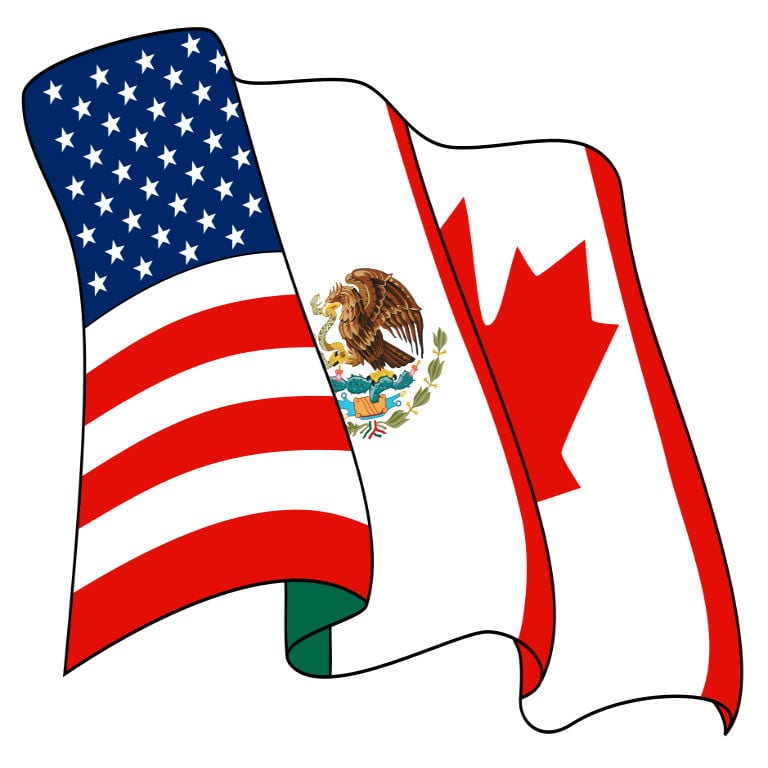Published:
On January 1, 1994, the United States, Canada, and Mexico came together and signed the North American Free Trade Agreement (NAFTA). This trade bloc aims to reduce trade restrictions among the three countries, thus encouraging investment and increasing market access. Under President Trump's administration, the three countries reached a new agreement called the United States-Mexico-Canada Agreement (USMCA) which replaces the former NAFTA. These two agreements have many similar points, yet several unique distinctions as well.
Overall, USMCA is pretty consistent with NAFTA. For example, steel and aluminum tariffs are still in place. Under the NAFTA agreement, there is a blanket tariff of 25 percent on steel and 10 percent on aluminum.
The new deal still has the original goal in mind but included a few alterations and updated a few numbers. One of the changes is the country of origin rule. In the original agreement, 62.5 percent of automobiles components must be manufactured in Mexico, US, or Canada in order to qualify for zero tariffs. But now under USMCA, the percentage increased to 75 percent. This change has the intention of strengthening the three countries’ manufacturing abilities as well as increasing the automotive workforce.
The dairy market also opened to allow more access from U.S. dairy farmers. Canada’s system of domestic quotas has always protected its farmers from foreign competition. But under the new USMCA agreement, US will be able to export up to 3.6 percent of Canada’s dairy market, an increase from the original one percent.
Another unique difference between the two is the sunset clause. With NAFTA, there is no automatic sunset clause or a predetermined ending date to the agreement. Any three countries can withdraw with six months’ notice. However, USMCA is only meant to last for 16 years. After six years, the three countries will get together again to negotiate and fix any problems. The possibility of an extension will also be discussed.
Overall, the shift from NAFTA to USCMA should not impact the three countries dramatically. Only certain industries will be affected, and only by a small amount. Companies from all three countries are going to be impacted, but with backup plans and new redesigns, hopefully, the transition process will not be long.
File under






